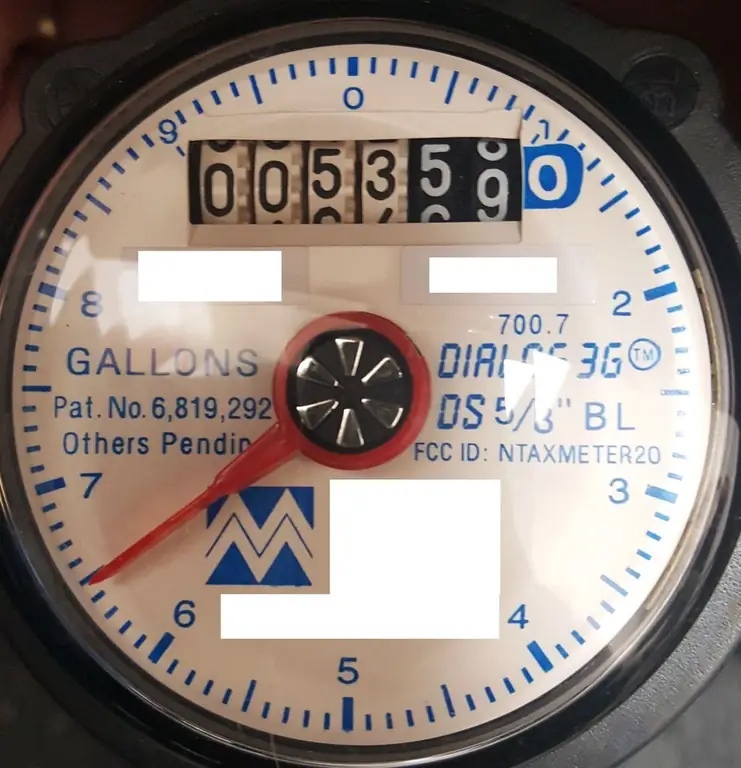2025 Author: Howard Calhoun | [email protected]. Last modified: 2025-01-24 13:10:31
Wind is the movement of air in a horizontal direction along the earth's surface. In which direction it blows depends on the distribution of pressure zones in the planet's atmosphere. The article deals with issues related to wind speed and direction.
Weather vane or anemone

Perhaps a rare occurrence in nature will be absolutely calm weather, because you can always feel that a light breeze is blowing. Since ancient times, mankind has been interested in the direction of air movement, so the so-called weather vane or anemone was invented. The device is an arrow freely rotating on a vertical axis under the influence of wind force. She points his direction. If you determine the point on the horizon from where the wind blows, then the line drawn between this point and the observer will show the direction of air movement.
In order for an observer to transmit information about the wind to other people, such concepts as north, south, east, west and their various combinations are used. Since the totality of all directions forms a circle, the verbal formulationis also duplicated with the corresponding value in degrees. For example, north wind means 0o(the blue compass needle points due north).
Wind rose concept

Speaking about the direction and speed of movement of air masses, a few words should be said about the wind rose. It is a circle with lines showing how air flows. The first mention of this symbol was found in the books of the Latin philosopher Pliny the Elder.
The whole circle, reflecting the possible horizontal directions of the forward movement of air, is divided into 32 parts on the wind rose. The main ones are north (0o or 360o), south (180o), east (90o) and west (270o). The resulting four parts of the circle are divided further, forming the northwest (315o), northeast (45o), southwest (225 o) and southeast (135o). The resulting 8 parts of the circle are again divided in half, which forms additional lines on the wind rose. Since the result is 32 lines, the angular distance between them is 11.25o (360o/32).
Note that the distinguishing feature of the wind rose is the image of a fleur-de-lis located above the north sign (N).
Where does the wind blow from?
Horizontal movements of large air masses are always carried out from areas of high pressure to areas of lower air density. At the same time, you can answer the question, what is the wind speed, by studyingthe location on a geographical map of isobars, that is, broad lines within which air pressure is constant. The speed and direction of movement of air masses is determined by two main factors:
- Wind always blows from areas where there is an anticyclone to areas covered by a cyclone. You can understand this if you remember that in the first case we are talking about zones of high pressure, and in the second case - low.
- Wind speed is in direct proportion to the distance that separates two adjacent isobars. Indeed, the greater this distance, the weaker the pressure drop will be felt (in mathematics they say a gradient), which means that the forward movement of air will be slower than in the case of small distances between isobars and large pressure gradients.
Factors affecting wind speed

One of them and the most important has already been voiced above - this is the pressure gradient between neighboring air masses.
Besides this, the average wind speed depends on the topography of the surface over which it blows. Any irregularities in this surface significantly hinder the forward movement of air masses. For example, everyone who has been in the mountains at least once should have noticed that the winds are weak at the foot. The higher you climb the mountainside, the stronger the wind feels.
For the same reason, winds blow stronger over the sea surface than over land. It is often eroded by ravines, covered with forests, hills and mountain ranges. All these inhomogeneities, which are not aboveseas and oceans, slow down any gusts of wind.
High above the earth's surface (on the order of several kilometers) there are no obstacles to the horizontal movement of air, so the wind speed in the upper troposphere is high.
Another factor that is important to consider when talking about the speed of movement of air masses is the Coriolis force. It is generated due to the rotation of our planet, and since the atmosphere has inertial properties, any movement of air in it is deflected. Due to the fact that the Earth rotates from west to east around its own axis, the action of the Coriolis force leads to the deviation of the wind to the right in the northern hemisphere, and to the left in the southern.
Curiously, this effect of the Coriolis force, which is negligible at low latitudes (tropics), has a strong influence on the climate of these zones. The fact is that the slowdown in wind speed in the tropics and at the equator is offset by increased updrafts. The latter, in turn, lead to the intense formation of cumulus clouds, which are sources of heavy tropical showers.
Instrument for measuring wind speed

It is an anemometer, which consists of three cups located at an angle of 120o relative to each other, and fixed on a vertical axis. The principle of operation of an anemometer is quite simple. When the wind blows, the cups experience its pressure and begin to rotate on the axis. The stronger the air pressure, the faster they spin. Having measuredthe speed of this rotation, you can accurately determine the wind speed in m/s (meters per second). Modern anemometers are equipped with special electrical systems that independently calculate the measured value.
The wind speed device based on the rotation of the cups is not the only one. There is another simple tool called the pitot tube. This device measures the dynamic and static wind pressure, the difference between which can accurately calculate its speed.
Beaufort scale

Information about wind speed, expressed in meters per second or kilometers per hour, for most people - and especially for sailors - says little. Therefore, in the 19th century, the English admiral Francis Beaufort proposed to use some empirical scale for evaluation, which consists of a 12-point system.
The higher the Beaufort scale, the stronger the wind blows. For example:
- The number 0 corresponds to absolute calm. With it, the wind blows at a speed not exceeding 1 mph, that is, less than 2 km / h (less than 1 m / s).
- The middle of the scale (number 6) corresponds to a strong breeze, the speed of which reaches 40-50 km/h (11-14 m/s). Such a wind is capable of raising large waves on the sea.
- Max Beaufort (12) is a hurricane that exceeds 120 km/h (more than 30 m/s).

Main winds on planet Earth
They are usually classified in the atmosphere of our planet as one of four types:
- Global. Are formedas a result of the different ability of continents and oceans to heat up from the sun's rays.
- Seasonal. These winds change with the season of the year, which determines how much solar energy a certain area of the planet receives.
- Local. They are associated with the peculiarities of the geographical location and topography of the area in question.
- Rotating. These are the strongest movements of air masses that lead to the formation of hurricanes.
Why is it important to study winds?

In addition to the fact that information about wind speed is included in the weather forecast, which every inhabitant of the planet takes into account in his life, air movement plays a big role in a number of natural processes.
So, he is a carrier of plant pollen and is involved in the distribution of their seeds. In addition, wind is one of the main sources of erosion. Its destructive effect is most pronounced in deserts, when the terrain changes dramatically during the day.
We should also not forget that the wind is the energy that people use in economic activities. According to general estimates, wind energy makes up about 2% of all solar energy falling on our planet.
Recommended:
Shelf life of water meters: period of service and operation, verification periods, operating rules and time of use of hot and cold water meters

The shelf life of water meters varies. It depends on its quality, the condition of the pipes, the connection to cold or hot water, the manufacturer. On average, manufacturers claim about 8-10 years of operation of devices. In this case, the owner is obliged to carry out their verification within the time limits established by law. We will tell you more about this and some other points in the article
High-speed trains. high speed train speed

Today there are express trains in almost every country. Let's see which is the fastest train in Russia and the world. Here is a rating of express trains that can reach speeds of over 300 kilometers per hour
Low Internet speed over WiFi: what to do? How to increase internet speed

The article explains why the Internet speed drops when using a wireless router
Rostelecom: reviews (Internet). Internet speed Rostelecom. Internet speed test Rostelecom

The Internet has long been not only entertainment, but also a means of mass communication and a tool for work. Many people not only chat online with friends using social services for this purpose, but also earn money
Why did the Internet speed drop (Rostelecom)? Reasons for low internet speed

Why did the internet speed drop? Rostelecom, like no one else, is familiar with this problem. Quite often, subscribers call the company and ask what happened to the Internet connection. Let's see what could be the reasons

